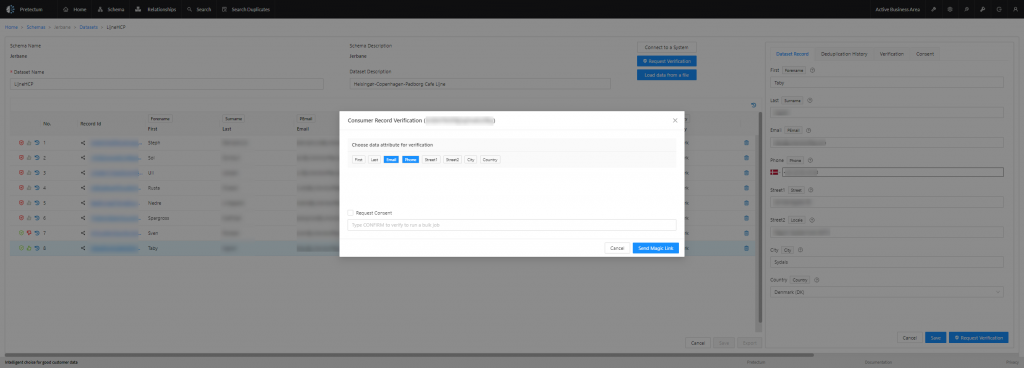Pretectum’s Customer Master Data Management (CMDM) system is designed to establish a “Single Source of Truth” for customer data across an organization.
This involves consolidating customer master data from various systems into a centralized repository, known as the “Golden Nominal” or “Golden Record“.
The Golden Record provides a comprehensive and authoritative view of each customer, including their personal information, and preferences, and summarises interactions with the company.
By maintaining accurate and up-to-date customer data, Pretectum CMDM enables businesses to uphold a social contract with consumers in several ways:
Data Privacy and Consent Management – Pretectum CMDM helps organizations comply with data privacy regulations and respect consumer consent preferences. It allows customers to verify and manage their personal data, fostering transparency and trust in the relationship.

Personalized and Relevant Experiences – With a unified customer view, businesses can deliver personalized marketing, recommendations, and support tailored to individual preferences and needs. This enhances the customer experience and strengthens the bond between the company and its customers.

Data Quality and Accuracy – Pretectum CMDM emphasizes data quality management, including data cleansing, validation, and enrichment techniques. This ensures that customer data is accurate, complete, and up-to-date, enabling businesses to make informed decisions and provide reliable information to consumers.

Consistent Interactions Across Touchpoints – By integrating customer data from various sources, Pretectum CMDM enables consistent and seamless interactions with customers across different channels and departments. This coherence in the customer experience reinforces the company’s commitment to its social contract.

Pretectum CMDM empowers businesses to establish and uphold social contracts with consumers by respecting data privacy, delivering personalized experiences, maintaining data quality, and ensuring consistent interactions across all touchpoints.
The establishment and maintenance of social contracts with consumers fosters trust, loyalty, and long-term relationships with customers ultimately maximizing customer lifetime value and customer loyalty.

